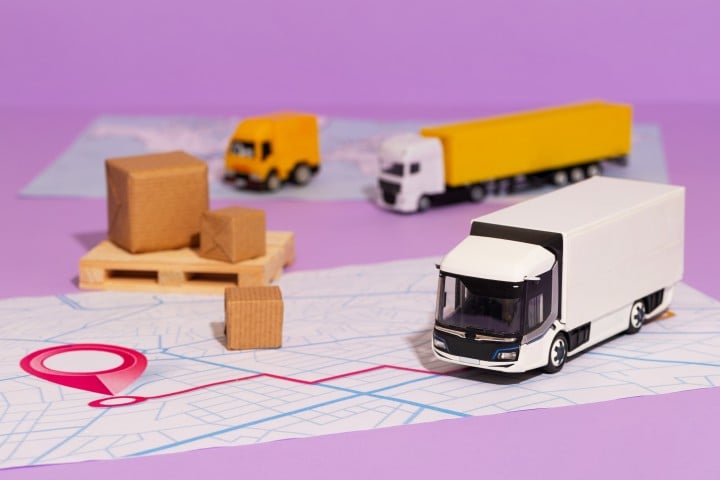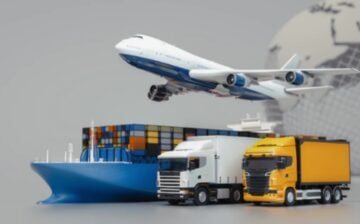Transportation systems are the lifeblood of our communities, connecting people to jobs, schools, healthcare, and leisure activities. In today’s fast-changing world, the methods we use to plan and develop these systems must also evolve. One tool that has grown in importance is geographic information systems (GIS). This article explains the role of gis and transportation planning in shaping modern infrastructure. We will explore how GIS technology can be used to design better roads, public transit systems, and bike lanes, all while making sure that projects are efficient, sustainable, and safe.
In this guide, we break down the subject into clear, easy-to-understand sections. Whether you are a student, an urban planner, or simply someone curious about the way technology influences our everyday commutes, this article is designed to be accessible. The content has been written in a simple, transparent style that avoids complex jargon. We also include natural anchor texts such as [GIS in Urban Planning] to connect you with related topics that can deepen your understanding.
The Intersection of GIS and Transportation Planning
The phrase gis and transportation planning encapsulates the integration of spatial data analysis with the creation of efficient transport networks. When these two areas intersect, the results can be impressive. Here are some ways that GIS is being used in the field of transportation:
Enhancing Route Planning and Network Analysis
GIS allows planners to map out road networks, identify the shortest or fastest routes, and simulate the effects of new construction. For example, a city considering a new bus line can use GIS to identify key areas of need, taking into account population density, current traffic patterns, and existing transit routes.
Supporting Infrastructure Development
When cities grow, new roads, bridges, and rail systems are necessary. GIS helps identify the best locations for these projects by highlighting areas with the most need, predicting future traffic loads, and ensuring that the designs are sustainable.
Improving Safety and Efficiency
Accidents and traffic jams can be costly and dangerous. By analyzing historical accident data along with current road conditions, GIS can help planners design safer intersections and identify locations for traffic calming measures.
Integrating Environmental Considerations
Modern transportation planning isn’t just about moving people from point A to point B. It is also about reducing environmental impacts. GIS can help assess the environmental impact of new projects, ensuring that routes avoid ecologically sensitive areas and reduce carbon emissions.
If you are interested in exploring this topic further, you might also find it useful to read about GIS in Urban Planning. This area of study provides additional insights into how GIS supports the design and management of urban spaces, complementing transportation planning efforts.
How GIS Supports Transportation Planning
GIS supports transportation planning by turning a mountain of data into a clear, visual story that helps decision makers. Here’s how this process works:
Data Collection and Integration
The first step is gathering data. This includes:
- Traffic Data: Information on how many vehicles travel on each road.
- Demographic Data: Population distribution and density.
- Environmental Data: Maps of green spaces, water bodies, and protected areas.
- Infrastructure Data: Existing road networks, transit routes, and locations of important facilities.
By integrating all these layers, GIS creates a comprehensive view of an area. This holistic perspective is critical for planning new transportation systems that serve the community effectively.
Analysis and Visualization
Once data is collected, GIS tools help visualize it in ways that are easy to understand:
- Heat Maps: These show areas of high traffic density or frequent accidents.
- Flow Maps: These illustrate the movement of people or vehicles, highlighting popular routes.
- Overlay Maps: By combining different data layers, planners can see how various factors, such as population density and road conditions, interact.
Scenario Simulation
GIS isn’t just about looking at the current state of affairs; it’s also about predicting future trends. Planners can simulate scenarios such as:
- New Road Construction: What will happen to traffic patterns if a new road is built?
- Public Transit Expansion: How will adding a new bus or rail line affect the overall transportation network?
- Emergency Response: How quickly can emergency services reach different parts of the city?
This ability to simulate future scenarios helps decision makers plan more resilient and responsive transportation networks.
Tools and Techniques in GIS and Transportation Planning
In the realm of gis and transportation planning, a variety of tools and techniques are used to analyze spatial data and create efficient transport systems. Let’s look at some of the most common methods:
Mapping Software and Applications
There are several mapping software options available that have been tailored to transportation planning:
- ArcGIS: A widely used tool in professional planning that offers robust data analysis and visualization capabilities.
- QGIS: An open-source alternative that many local governments and academic institutions prefer for its flexibility and cost-effectiveness.
- Web-based Mapping Tools: Many modern systems are cloud-based, allowing for real-time updates and collaborative planning.
Network Analysis
Network analysis is a critical component of transportation planning. It involves:
- Shortest Path Analysis: Determining the quickest route from one point to another.
- Accessibility Analysis: Identifying how easily people can reach essential services like hospitals and schools.
- Traffic Flow Analysis: Understanding the movement patterns within a transportation network to optimize road design and signal timings.
Spatial Statistics
Spatial statistics help in understanding patterns that may not be obvious at first glance. This includes:
- Cluster Analysis: Finding areas with high concentrations of accidents or heavy traffic.
- Regression Analysis: Examining the relationships between different variables, such as the link between road conditions and accident rates.
- Predictive Modeling: Using historical data to forecast future trends in traffic and transit use.
Real-Time Data Integration
With the advent of the Internet of Things (IoT), many cities now collect real-time data from sensors, cameras, and GPS systems. This information feeds into GIS to provide up-to-date insights on traffic conditions, helping planners and drivers make smarter decisions.
Hands-on Techniques
To ensure that the findings from GIS are practical, transportation planners often conduct field surveys and community consultations. These techniques add a human dimension to the data and help verify that the planned solutions meet real-world needs.
Benefits of Using GIS in Transportation Planning
The application of gis and transportation planning methods offers numerous benefits that improve the way cities and regions manage their transport systems. Here are some of the key advantages:
- Informed Decision Making: GIS provides a clear picture of current transportation networks, helping planners make decisions based on accurate, up-to-date data.
- Improved Safety: By identifying dangerous intersections and high-accident zones, GIS can lead to improvements that make roads safer.
- Cost Efficiency: With detailed data analysis, projects can be better planned and executed, reducing unnecessary spending.
- Enhanced Communication: Maps and visualizations make it easier for planners to explain complex ideas to the public and stakeholders.
- Environmental Protection: GIS helps in planning routes that minimize environmental impact and promote sustainability.
- Efficient Resource Allocation: By highlighting areas of high demand, GIS allows for the efficient allocation of funds and resources.
- Better Public Engagement: Visual tools make it easier for community members to understand proposed projects, fostering greater public involvement.
These benefits contribute to more resilient, adaptable, and forward-thinking transportation systems. They also help local governments build trust with residents by basing projects on solid data and clear analysis.
Real-World Applications and Case Studies
Cities and regions around the world have successfully integrated GIS into their transportation planning efforts. Let’s explore a few practical examples that show how these techniques are making a difference.
Urban Transit Systems
Many cities have used GIS to plan new transit lines and improve existing routes. For example:
- Optimizing Bus Routes: By analyzing passenger data and traffic patterns, planners can redesign bus routes to serve more people with less delay.
- Subway Expansion: GIS tools help determine the best locations for new subway stations, ensuring they are accessible to as many residents as possible.
- Integration with Bike and Pedestrian Paths: In modern cities, transportation planning goes beyond cars and buses. GIS supports the development of bike lanes and pedestrian-friendly paths, encouraging healthier and more environmentally friendly travel.
Disaster Management and Emergency Response
In times of crisis, such as natural disasters, GIS plays a vital role in transportation planning:
- Evacuation Routes: GIS can be used to model the fastest and safest evacuation routes for residents.
- Resource Allocation: During an emergency, it is essential to know where to position aid and emergency services. GIS provides a clear picture of where help is most needed.
- Recovery Planning: After a disaster, GIS assists in planning the reconstruction of damaged roads and infrastructure, ensuring that communities can recover quickly and safely.
Integrating with Broader Urban Strategies
Many modern urban projects now incorporate GIS as a key component. For instance, when cities update their long-term transportation plans, GIS is used to merge transportation planning with other urban initiatives. For a broader perspective, consider how [GIS in Urban Planning] naturally connects with transportation projects. By looking at the big picture, planners can design cities that are both smart and sustainable.
Challenges and Considerations
While the benefits of using GIS in transportation planning are clear, there are also challenges that planners must navigate. Understanding these challenges helps in devising strategies that overcome obstacles and make the most of available resources.
Data Quality and Availability
- Inconsistent Data Sources: Not all data is collected in the same way or at the same time. Variability in data quality can lead to inaccurate analyses.
- Data Integration Issues: Merging data from different sources often requires careful cleaning and standardization.
- Limited Access: In some regions, particularly in developing areas, there may be limited access to up-to-date or high-quality data.
Technical and Financial Constraints
- Software Costs: High-end GIS software can be expensive, and smaller cities or rural areas may struggle to fund these tools.
- Training Requirements: Effective use of GIS requires training. Planners and staff must learn how to use the software, which can be time-consuming.
- Maintenance: Keeping the data current and the software running smoothly requires ongoing investment and technical support.
Human Factors and Public Perception
- Complexity for Non-Experts: Even though GIS tools are designed to be user-friendly, the underlying concepts can be challenging for the general public to grasp.
- Resistance to Change: Sometimes, local governments or communities may resist changes to established transportation networks, even when new data suggests improvements.
- Privacy Concerns: Collecting detailed location data can raise privacy issues that must be carefully managed and addressed.
Overcoming GIS and Transportation Planning the Challenges
To mitigate these issues, planners can adopt several strategies:
- Invest in Training: Regular training sessions for staff can ensure that everyone is up to date with the latest GIS techniques.
- Standardize Data Collection: Establishing consistent data collection methods helps in integrating various data sources more effectively.
- Community Engagement: Transparent communication with the public about how data is collected and used can help alleviate concerns and build trust.
- Collaboration with Technology Providers: Partnering with tech companies and academic institutions can provide access to cutting-edge tools and research.
Future Trends in GIS and Transportation Planning
As technology continues to evolve, the future of gis and transportation planning looks promising. Here are some trends that are likely to shape the next decade:
Smart Cities and Real-Time Data
- Internet of Things (IoT): More sensors and connected devices mean that transportation networks can be monitored in real time. This allows for quick responses to issues like traffic jams or accidents.
- Dynamic Routing: With up-to-date data, navigation systems can suggest real-time changes to routes, reducing delays and congestion.
- Improved Public Transit: Real-time tracking and scheduling can make public transportation more reliable and user-friendly.
Sustainable Transportation
- Green Infrastructure: As cities aim to reduce their carbon footprints, GIS will be instrumental in planning routes that favor eco-friendly transportation modes such as cycling and walking.
- Environmental Impact Analysis: GIS will continue to improve in its ability to analyze the environmental impacts of transportation projects, helping cities design greener and more sustainable infrastructure.
- Energy-Efficient Solutions: Future advancements may include GIS systems that help optimize fuel use and reduce emissions through better route planning and traffic management.
Integration with Emerging Technologies
- Artificial Intelligence (AI): Combining AI with GIS can lead to smarter predictions and automated decision-making. AI algorithms can process vast amounts of data quickly and suggest solutions that human planners might overlook.
- Virtual Reality (VR) and Augmented Reality (AR): These technologies can create immersive simulations of transportation networks. Planners can explore different scenarios in a virtual environment, which can help them understand the potential impact of their decisions before implementation.
- 5G Connectivity: With faster internet speeds, real-time data collection and communication will become even more seamless, enhancing the overall effectiveness of GIS-based transportation planning.
The Role of Policy and Community Involvement
- Inclusive Planning: Future transportation planning will involve a wider range of community stakeholders. GIS will support more transparent and participatory decision-making processes.
- Data Governance: As data becomes increasingly central to planning, policies will need to ensure that data is used ethically and responsibly.
- Interdepartmental Collaboration: Municipalities are likely to see more collaboration between departments, using GIS as a common platform to share data and insights.
Why It Matters to Communities
For everyday citizens, the benefits of effective transportation planning are clear. Shorter commute times, safer roads, and improved access to essential services all contribute to a better quality of life. When planners use GIS to design and update transportation networks, they are not just building roads or transit systems—they are building the future of our communities.
We hope you found this blog post on Harnessing the Power of GIS and Transportation Planning, useful. Be sure to check out our post on Improve Processes: Update Your Transportation Logistics for more great tips!
Have Experience in the Moving Industry? Want an Additional Income Stream? Work With All Around Moving!
All Around Moving’s Work With Us program, gives the experienced moving consultants with the option to run their own Relocation Consultant business from any city.We share profits 50%-50% with you from all the jobs you book with us. Click here to learn more.






